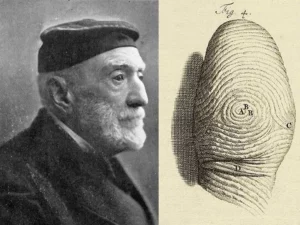Key Facts
- Fingerprints are unique to each individual, formed in the womb, and remain unchanged throughout life, even in identical twins.
- Fingerprinting has a rich history, dating back to ancient civilizations, with modern techniques established in the 19th century by Sir Francis Galton.
- Today, there are two main methods of fingerprinting: Live Scan, which uses digital technology, and ink fingerprinting, which involves physical ink and cards.
- Friction ridges on fingertips create distinct patterns essential for identification and grip, categorized into loops, whorls, and arches.
- Fingerprint submissions can be rejected due to various factors, but advanced Live Scan technology helps minimize these issues and ensures accurate captures.
What Are Fingerprints and Why Are They Unique?
Fingerprint patterns are formed in the womb and remain unchanged throughout your life. No two people have the same fingerprints — not even identical twins. This uniqueness makes them ideal for personal identification.
A Brief History of Fingerprint Science
Fingerprinting as a method of identification dates back to ancient Babylon and China, but modern forensic fingerprinting began in the 19th century. Sir Francis Galton helped establish the science behind fingerprint classification systems still used today.
How Fingerprinting Technology Works Today
There are two primary fingerprinting methods used today:
- Live Scan Fingerprinting: Uses a digital scanner to capture and transmit your prints electronically to the DOJ or FBI.
- Ink Fingerprinting: Involves rolling your fingers in ink and pressing them onto FD-258 fingerprint cards.
➡️ Dive deeper into the differences with our post on Live Scan vs. Ink Fingerprinting.
What Are Friction Ridges?
Your fingerprints consist of friction ridges — tiny raised patterns on your fingertips. These ridges determine fingerprint types such as loops, whorls, and arches.
Why Some Fingerprints Get Rejected
Sometimes fingerprints are unreadable due to:
- Age or worn ridges
- Scarring
- Excessive moisture or dryness
- Improper scanning technique
We use state-of-the-art Live Scan fingerprinting machines to reduce rejection rates and ensure accuracy.
🔎 Want to learn more?
Visit our full Fingerprint Science Blog Series for more insights and updates.
Frequently Asked Questions About Fingerprint Science
What makes fingerprints scientifically unique?
Fingerprints are formed in the womb and remain unchanged for life. The patterns—loops, whorls, and arches—are determined by genetics and environmental conditions during development, making every set unique, even among identical twins.
Why are fingerprints used for identification?
Because no two fingerprints are alike and they don’t change over time, they are an ideal method for confirming a person’s identity in law enforcement, licensing, and employment background checks.
What’s the difference between Live Scan and ink fingerprinting?
Live Scan uses a digital scanner to submit prints electronically, typically to the DOJ or FBI. Ink fingerprinting uses FD-258 fingerprint cards and is required for out-of-state or international purposes.
What are friction ridges and what do they do?
Friction ridges are the raised lines on your fingertips that create fingerprint patterns. They help us grip objects and form the basis for biometric identification.
Why might a fingerprint submission be rejected?
Rejections often occur due to smudged prints, low ridge detail (common with elderly individuals), scarring, or improper technique. At Anshin Notary, we use advanced Live Scan systems to reduce rejection rates and capture clean prints the first time.
What happens if my fingerprints are unreadable?
If your prints are rejected, we can help you resubmit with better techniques or switch to ink fingerprinting if needed. We’re experienced with hard-to-capture prints and can guide you through the correction process.
Can fingerprint patterns be changed or altered?
No, fingerprint patterns do not naturally change. However, permanent scars or injuries may affect how prints are read. Despite this, biometric systems and manual examiners can usually still identify usable ridge detail.
